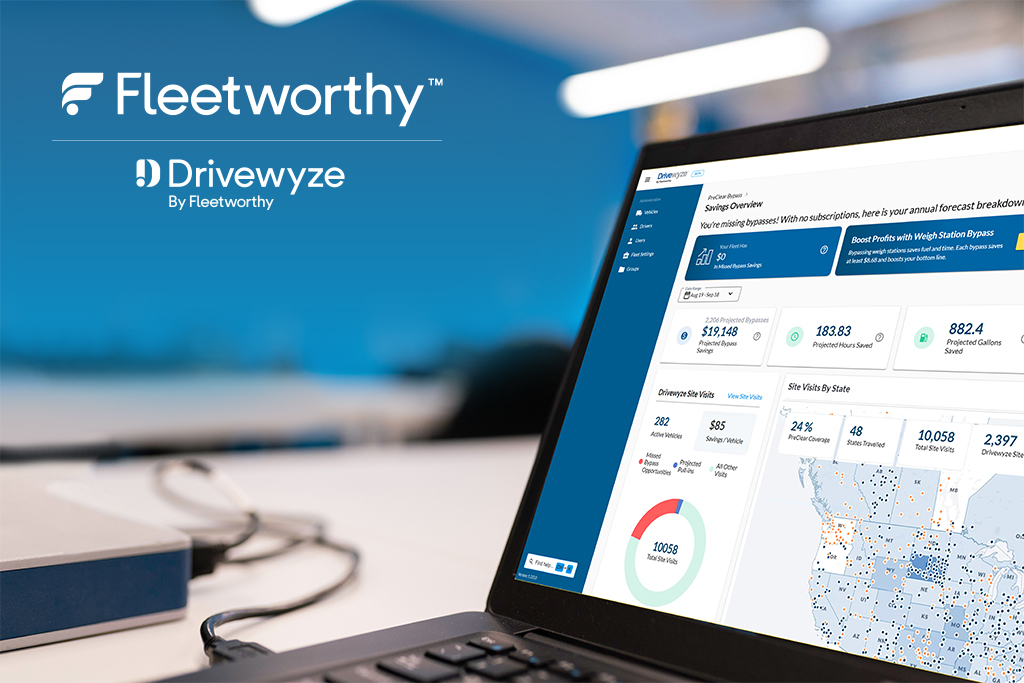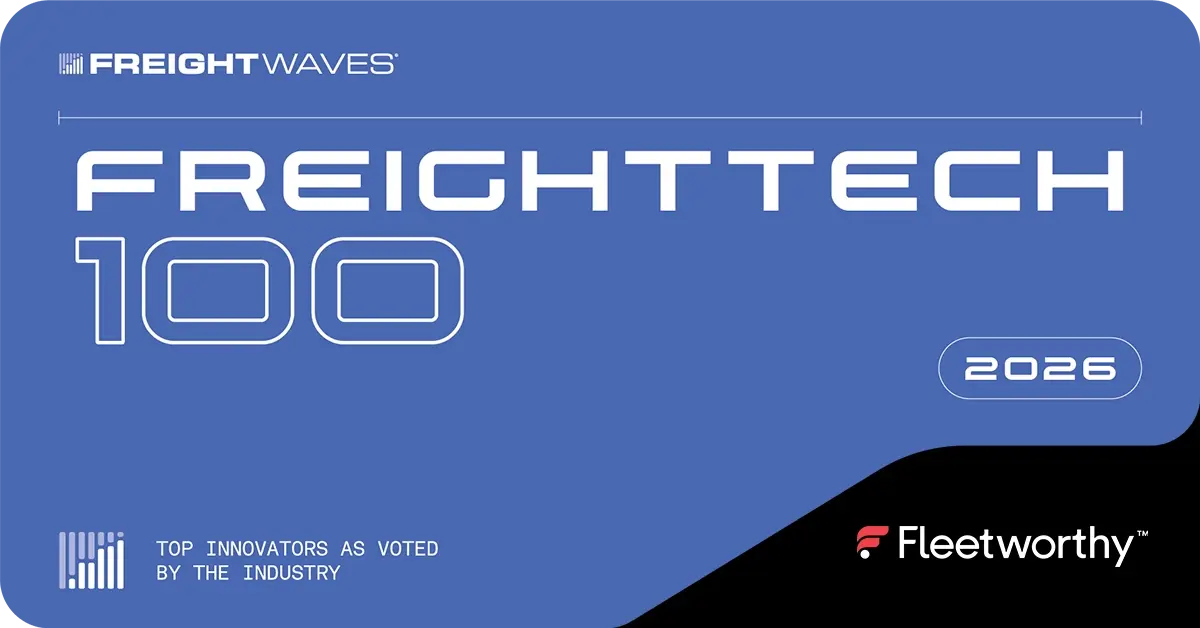Fleet lifecycle management (FLM) is more than just keeping track of vehicles from acquisition to disposal; it’s a strategic discipline that directly impacts operational efficiency, cost control, compliance, and safety. As fleets grow in size and complexity, the pressure to extract maximum value from every asset intensifies. That’s where a practical, results-driven approach to FLM becomes essential.
Rather than relying on reactive maintenance, outdated replacement schedules, or fragmented data, forward-thinking fleet managers are adopting a holistic view of their fleet’s lifecycle. This approach not only ensures that each asset is performing optimally during its time in service but also supports smarter decision-making around procurement, maintenance, driver allocation, and eventual disposal.
Effective fleet lifecycle management is no longer a luxury, it’s a necessity. Rising fuel costs, tighter safety and emissions standards, and increased demand for operational transparency require fleets to do more with less. At the center of this challenge lies asset utilization, a critical metric that measures how effectively each vehicle contributes to business outcomes.
This guide focuses on practical strategies to optimize asset utilization throughout the entire fleet lifecycle. By doing so, fleet operators can reduce downtime, lower total cost of ownership (TCO), improve driver productivity, and create a more agile, data-driven fleet operation. Whether managing a private delivery fleet, a municipal service fleet, or a nationwide transportation network, applying these principles can lead to meaningful improvements in performance and profitability.
Understanding the Fleet Lifecycle
Fleet lifecycle management is a strategic framework that guides every stage of a vehicle’s journey within a fleet, from initial acquisition through daily operations and ultimately to its retirement or resale. Each phase of this lifecycle presents opportunities to improve asset utilization, reduce costs, and extend the productive life of vehicles.
Let’s explore each stage in detail:
1. Acquisition
The lifecycle begins with smart acquisition decisions, which set the foundation for asset performance, cost-effectiveness, and usability.
- Choosing the Right Vehicles for the Job: Fleet vehicles should be selected based on operational requirements, such as payload, route type, climate, and duty cycle. Over- or under-spec’ing can lead to underutilization, excessive maintenance, or early replacement.
- Total Cost of Ownership (TCO) Analysis: Rather than focusing solely on upfront price, consider TCO, including fuel efficiency, maintenance costs, depreciation, and resale value. This ensures vehicles are a long-term asset, not a short-term liability.
- Leasing vs. Owning: The decision between leasing and owning vehicles affects cash flow, tax treatment, flexibility, and replacement cycles. Leasing may offer predictable costs and easier upgrades, while ownership can provide greater long-term control.
2. Deployment
Once acquired, how and where a vehicle is introduced into operations has a direct impact on how efficiently it’s used.
- Efficient Allocation: Deploying the right vehicle to the right task or region is essential. Misallocated assets can sit idle, run inefficiently, or experience accelerated wear.
- Onboarding & Setup: This includes equipping vehicles with required technology (e.g., telematics, cameras), registering them with compliance authorities, and preparing them for immediate and safe operation.
- Spec’ing for Longevity: This is where acquisition and deployment intersect. Specifying vehicles with the right tires, suspension, safety systems, and upfits can reduce unnecessary downtime and support a longer operational lifespan.
3. Operation & Maintenance
This is the longest and most dynamic phase of the lifecycle, and where asset utilization is most directly affected.
- Preventive vs. Predictive Maintenance: Preventive maintenance (scheduled services) can reduce costly breakdowns, but predictive maintenance (based on real-time data) takes it further by identifying issues before they lead to failure.
- Leveraging Telematics & Diagnostics: Telematics systems provide insights into vehicle health, fuel usage, idle time, and driver behavior. These insights help improve asset use, schedule maintenance more effectively, and extend vehicle lifespan.
- Driver Behavior Impact: Harsh braking, speeding, excessive idling, and unauthorized use all contribute to higher operating costs and lower utilization. Monitoring and training drivers ensures vehicles stay in optimal condition and are used productively.
4. Reassignment or Repurposing
As operational needs shift, fleets must reassess how existing assets can be better used.
- Reallocating Underutilized Vehicles: Identifying vehicles with low mileage or usage rates allows fleet managers to reassign them to routes or departments with greater demand.
- Adapting to Business Evolution: Fleets evolve. A vehicle originally spec’d for long-haul use may be better repurposed for regional distribution. Regular fleet audits help match vehicle capabilities to changing operational needs.
- Reducing Redundancy: Reassignment also helps avoid unnecessary new purchases, by maximizing the use of what’s already available.
5. Disposal or Replacement
Every asset has a useful life, knowing when and how to retire or replace vehicles is key to sustaining high utilization and minimizing total cost.
- Optimal Timing for Resale or Retirement: Vehicles should be replaced not just based on age or mileage, but on a combination of factors including repair costs, downtime trends, and market conditions. Replacing too early wastes potential value; too late increases operating costs.
- Data-Driven Decisions: Telematics data, maintenance records, and utilization reports can all inform smarter replacement planning. This ensures vehicles are removed from service at the point when cost exceeds value.
- Sustainable Disposal: Consider resale markets, trade-in programs, and environmentally responsible disposal practices that align with company goals and generate residual value.
By understanding and actively managing each phase of the fleet lifecycle, organizations can significantly enhance asset utilization, reduce total costs, and ensure every vehicle is contributing effectively to business operations. This lifecycle perspective encourages continuous improvement and positions fleets to be agile, efficient, and data-driven in their asset management approach.
Practical Tactics to Optimize Utilization
Optimizing asset utilization isn’t about working vehicles harder, it’s about using them smarter. The goal is to ensure every vehicle contributes to your operation in a cost-effective, productive, and safe manner throughout its lifecycle. Below are key tactics that align operational processes with real-world performance outcomes:
1. Telematics and Real-Time Monitoring
Telematics technology provides real-time insights that are essential for effective fleet management and utilization.
- GPS Tracking: Helps identify route inefficiencies, reduce idle time, and verify that vehicles are being used appropriately.
- Engine Diagnostics: Monitor health indicators like fuel system performance, oil pressure, tire conditions, and battery status to prevent breakdowns and improve uptime.
- Driver Behavior Monitoring: Collect data on harsh braking, acceleration, cornering, speeding, and idling. Correcting unsafe or inefficient behaviors leads to better fuel economy, lower maintenance needs, and extended vehicle life.
- Utilization Dashboards: Platforms that consolidate this data allow you to benchmark vehicle usage, identify underperforming assets, and make smarter deployment or replacement decisions.
Action Tip: Use telematics to flag vehicles below a set utilization threshold (e.g., <60% usage) for reassignment or downsizing analysis.
2. Right-Sizing the Fleet
Having too many vehicles increases overhead and parking costs, while too few can lead to overuse, delayed service, and increased wear.
- Avoid Over- or Under-Fleeting: Analyze usage data to determine the actual number of vehicles required to meet operational demand without excessive backup capacity.
- Utilization Reports: Review monthly or quarterly reports to identify surplus vehicles that could be sold, repurposed, or rotated into other business units.
- Flexible Sourcing Models: Consider temporary rentals or leasing for seasonal surges instead of maintaining permanent excess capacity.
Action Tip: Use route density and job volume data to perform seasonal fleet right-sizing reviews (e.g., pre-peak or off-season).
3. Standardizing Maintenance Programs
Maintenance is one of the most controllable factors influencing asset utilization.
- From Reactive to Predictive: Move beyond scheduled maintenance to condition-based servicing using real-time data. Predictive alerts help catch issues early, reducing downtime.
- Centralized Service Standards: Standardizing maintenance schedules and vendor protocols ensures consistency across the fleet, regardless of vehicle make or location.
- Maintenance History Tracking: Leverage fleet software to log all service events, enabling data-backed decisions on future repairs, replacements, or warranty claims.
Action Tip: Implement a scorecard for vehicles based on maintenance cost trends, unplanned downtime, and fault code frequency.
4. Lifecycle Planning
Optimized utilization is closely tied to how and when vehicles are replaced.
- Set Replacement Cycles by Asset Type: Don’t use one-size-fits-all benchmarks. Light-duty vehicles may reach peak cost-efficiency at 120K miles, while heavy-duty assets may need longer life cycles.
- Total Cost of Ownership (TCO) Analysis: Combine acquisition, operating, maintenance, and resale data to find the sweet spot for each vehicle’s useful life.
- Disposition Strategy: Use historical resale data and market timing to maximize vehicle value at end-of-life.
Action Tip: Create lifecycle replacement thresholds that trigger automated review once usage, age, or cost thresholds are met.
5. Driver Training & Accountability
Drivers play a critical role in vehicle performance and utilization outcomes.
- Behavioral Training: Implement defensive driving and fuel-efficient driving courses to reduce wear, collisions, and excessive idling.
- Scorecards & Feedback Loops: Use telematics to generate driver performance metrics, and provide regular coaching or rewards based on performance.
- Accountability Frameworks: Require drivers to complete pre-trip inspections, report early warning signs of wear or failure, and adhere to usage policies.
Action Tip: Link driver incentives to utilization outcomes, such as fuel savings, reduced idle time, or maintenance avoidance.
By combining technology, data, proactive planning, and driver engagement, these practical tactics form a comprehensive approach to maximizing asset utilization. When implemented consistently, they allow fleets to do more with less, reducing downtime, extending vehicle lifespan, and improving ROI across the entire operation.
Integrating Fleet Lifecycle Management Into Broader Strategy
Fleet Lifecycle Management (FLM) should never operate in a vacuum. When effectively integrated into your organization’s broader business strategy, FLM becomes a powerful tool to drive measurable improvements in cost efficiency, risk reduction, compliance, and sustainability. This section explores how to embed FLM within your company’s long-term objectives and align it with key stakeholders across departments.
1. Aligning FLM with Company Goals
FLM should directly support and enhance your organization’s core business priorities. A well-aligned program helps fleet managers transition from a reactive role to a strategic partner in company success.
- Cost Reduction: Lifecycle cost analysis and optimized asset utilization help control operating expenses, reduce total cost of ownership (TCO), and free up capital for reinvestment. A data-driven FLM approach identifies high-cost assets, underperforming routes, and inefficient replacement cycles that drain budgets.
- Safety Improvement: Integrated FLM strategies enhance fleet safety by ensuring vehicles are properly maintained, replaced before they become liabilities, and spec’d with modern safety features (e.g., ADAS, lane assist, dashcams). Safer fleets lead to fewer accidents, lower insurance premiums, and improved CSA scores.
- Sustainability Initiatives: With increasing focus on environmental impact, FLM supports sustainability goals by transitioning to electric vehicles (EVs), reducing fuel consumption, and extending the usable life of assets. It also helps companies measure and report on greenhouse gas (GHG) emissions, idle time, and vehicle efficiency.
Strategic Tip: Build FLM KPIs (e.g., cost per mile, average asset utilization rate, vehicle downtime, emissions per mile) into your executive-level performance dashboards.
2. Leveraging Cross-Functional Collaboration
Fleet lifecycle decisions impact, and are impacted by, multiple departments. Creating alignment across teams is key to a cohesive and effective FLM strategy.
- Operations: Provide insights into asset use, route efficiency, and service demands. FLM data can help operations teams adjust logistics strategies or shift vehicle allocations in real-time.
- Safety & Compliance: Work closely with safety leaders to ensure that vehicle choices support driver safety and that preventive maintenance aligns with compliance standards (e.g., FMCSA, DOT).
- Finance: Collaborate on budget forecasting, lease-vs-own analysis, capital planning, and residual value strategies. Finance teams benefit from FLM data when assessing asset depreciation and evaluating ROI.
- Human Resources (HR): HR plays a vital role in driver training, performance monitoring, and enforcing accountability programs. FLM also supports HR in reducing driver fatigue and improving morale through better equipment and working conditions.
Integration Tip: Form a fleet steering committee with reps from key departments to review lifecycle KPIs quarterly and align replacement strategies, safety programs, and financial plans.
3. Using FLM Insights to Guide Strategic Decisions
Fleet lifecycle data should be a cornerstone of long-term planning and business development efforts.
- Smarter Acquisitions: Use historical maintenance records, utilization trends, and performance analytics to determine what vehicles to buy, lease, or retire. This reduces the risk of over-spec’ing or purchasing the wrong asset for the job.
- Contract Negotiations: FLM data informs better vendor and leasing contract negotiations by showing actual vehicle lifespans, downtime trends, and support needs. It empowers procurement teams with leverage in pricing, warranty terms, and service agreements.
- Technology Investments: If FLM data reveals recurring inefficiencies (e.g., extended idle times, delayed maintenance alerts), it can justify investments in telematics upgrades, mobile maintenance apps, or predictive analytics tools.
- Fleet Mix Adjustments: Identify which vehicle classes are overused, underused, or incurring excessive costs. This allows you to rebalance your fleet (e.g., adding smaller EVs for short-haul trips or retiring aged Class 8 vehicles with poor fuel performance).
Decision-Making Tip: Present lifecycle analytics during annual planning sessions to influence decisions on CAPEX allocation, emissions targets, and operational shifts.
Integrating Fleet Lifecycle Management into your broader business strategy transforms it from a tactical function into a strategic advantage. By aligning FLM with organizational goals, fostering collaboration across departments, and leveraging insights to guide high-level decisions, fleet operations can contribute directly to company growth, safety, sustainability, and financial performance.




